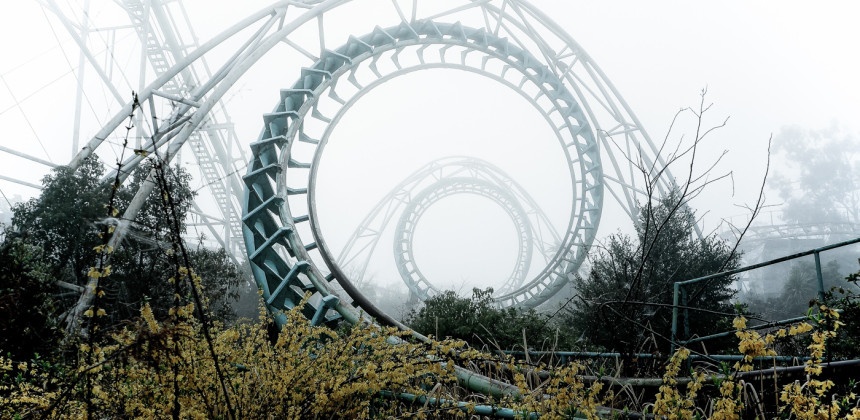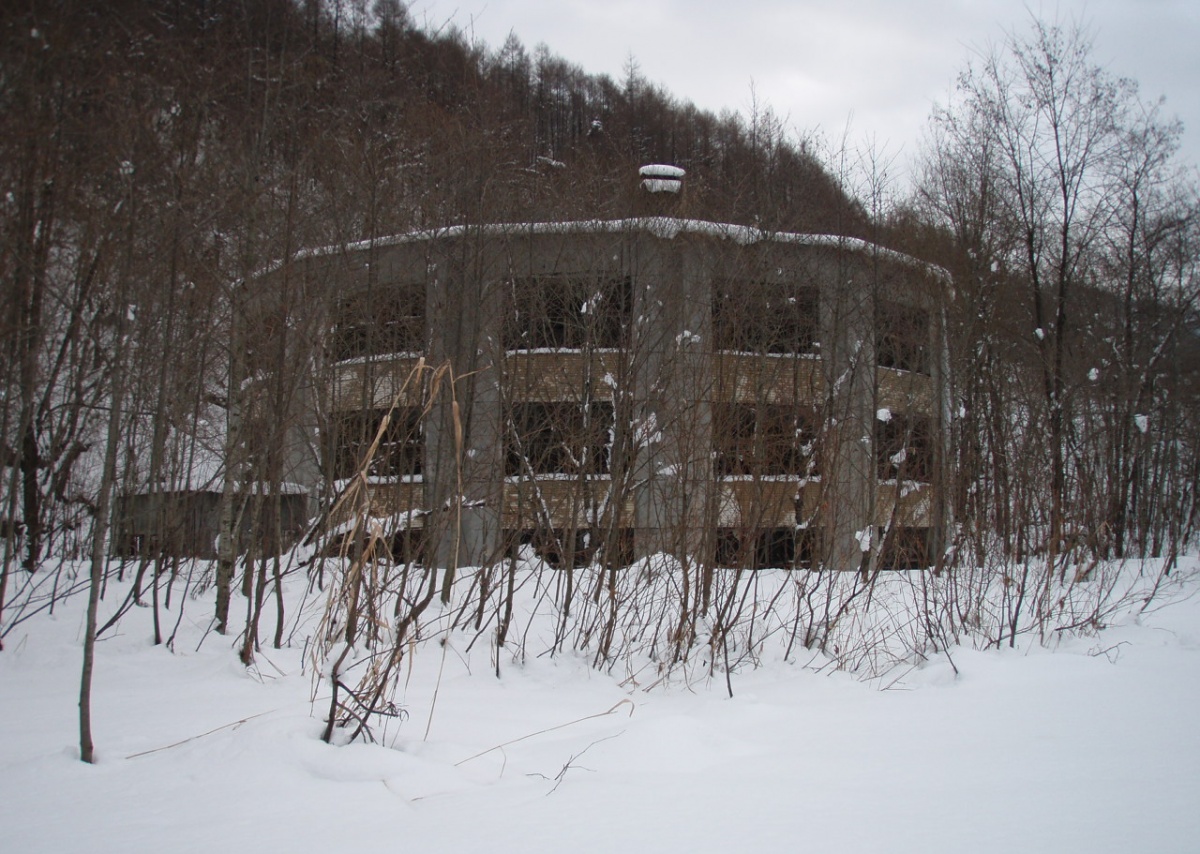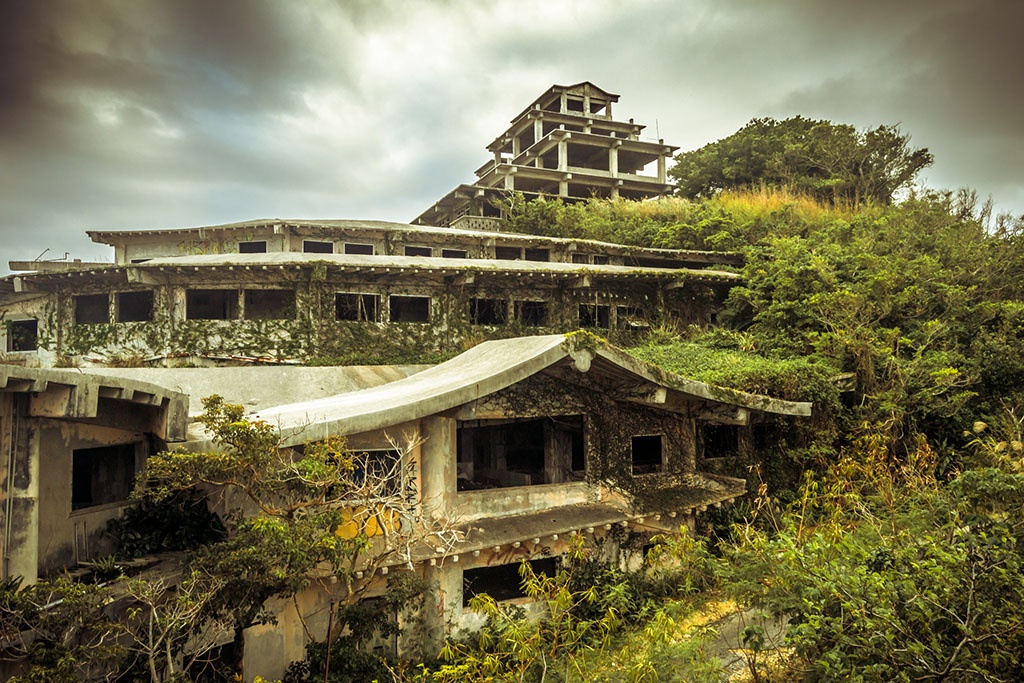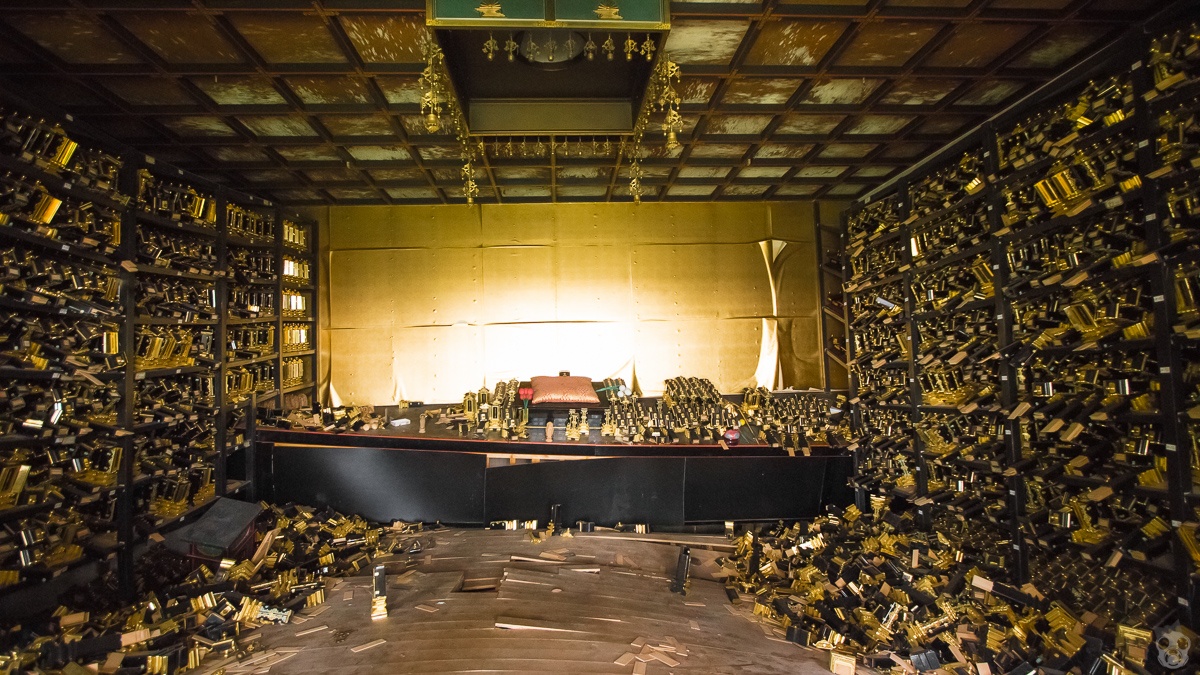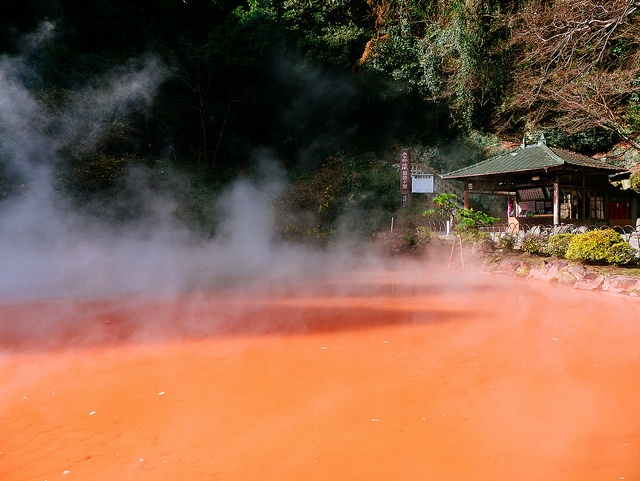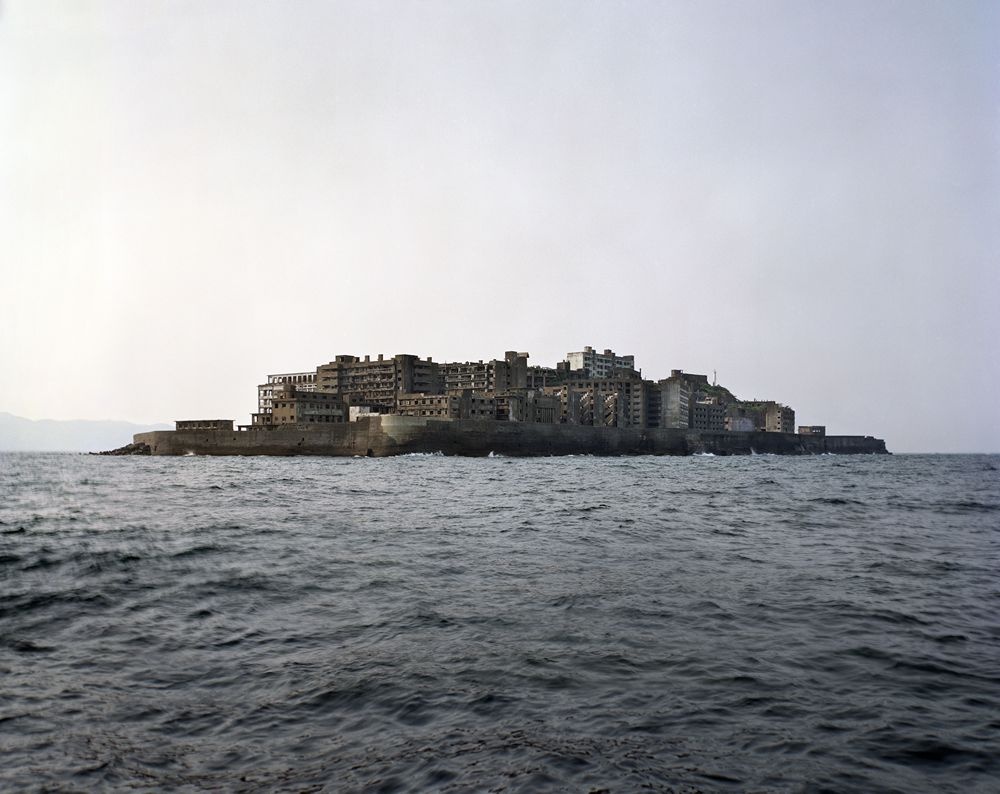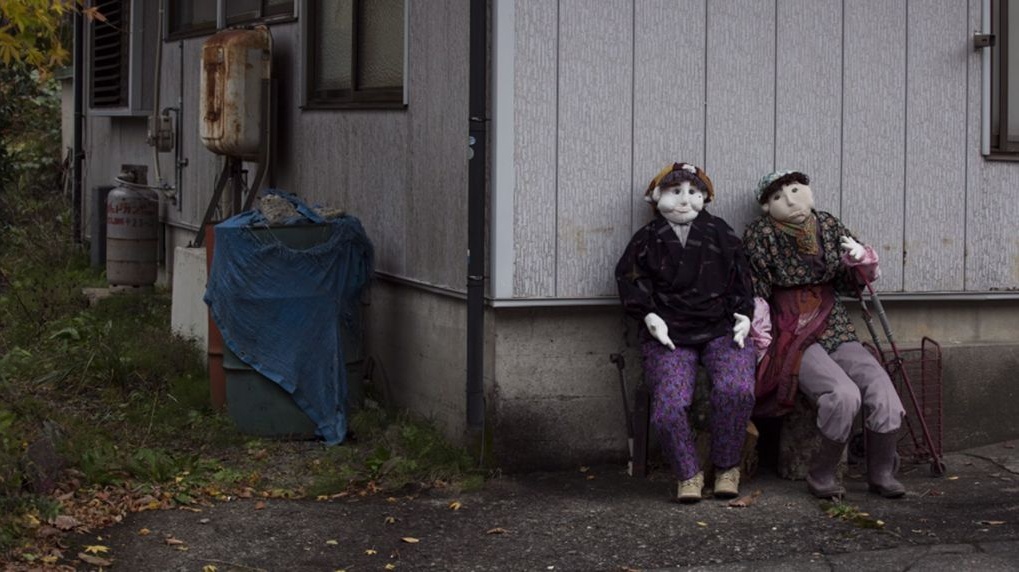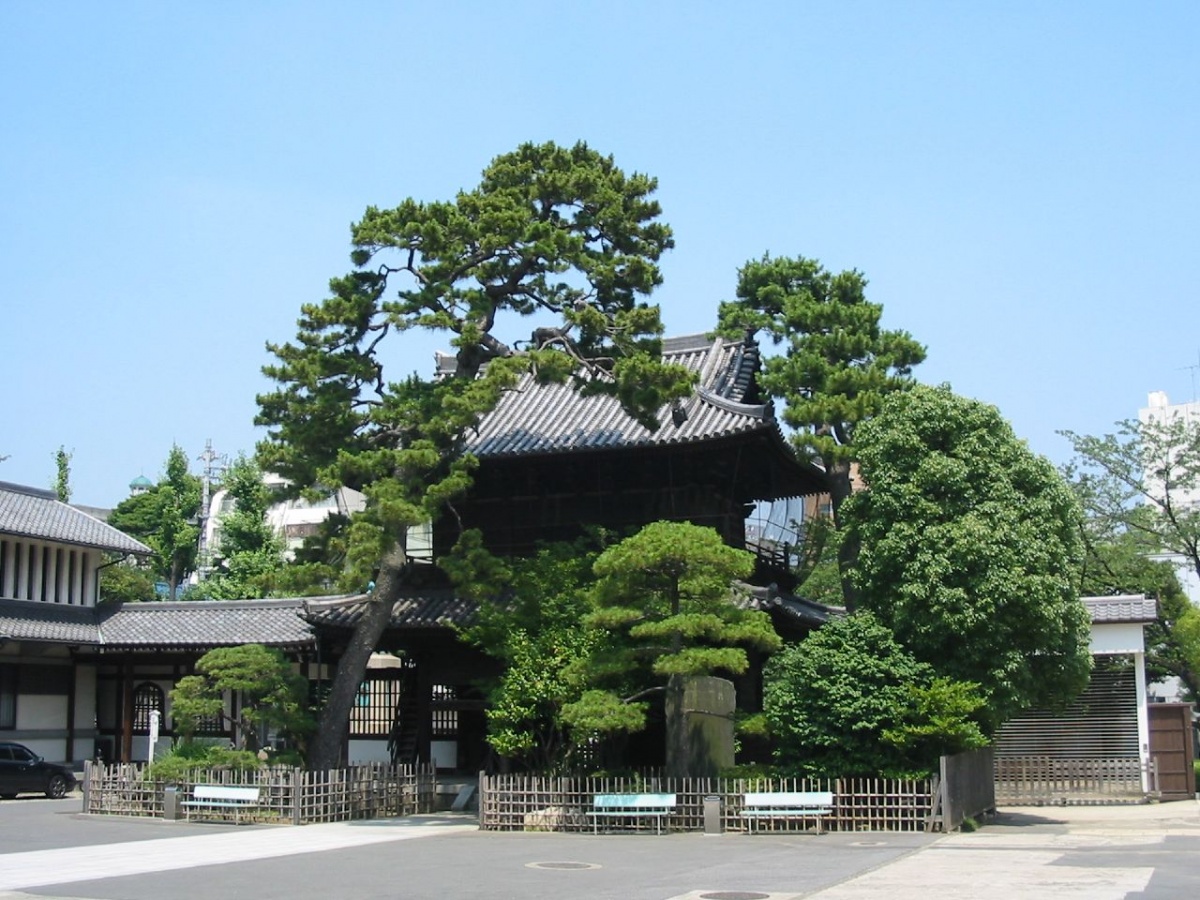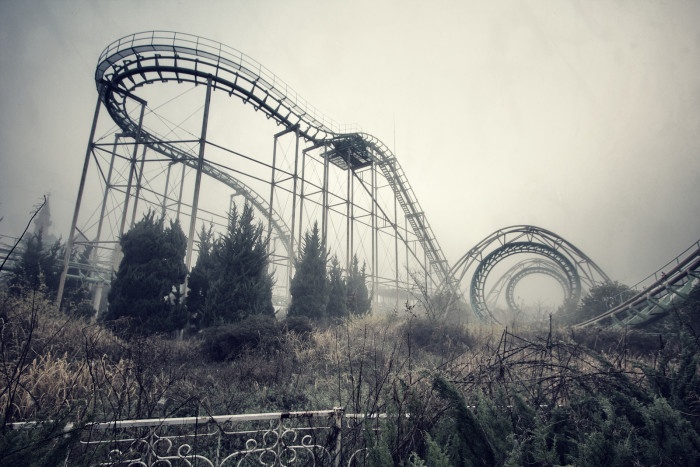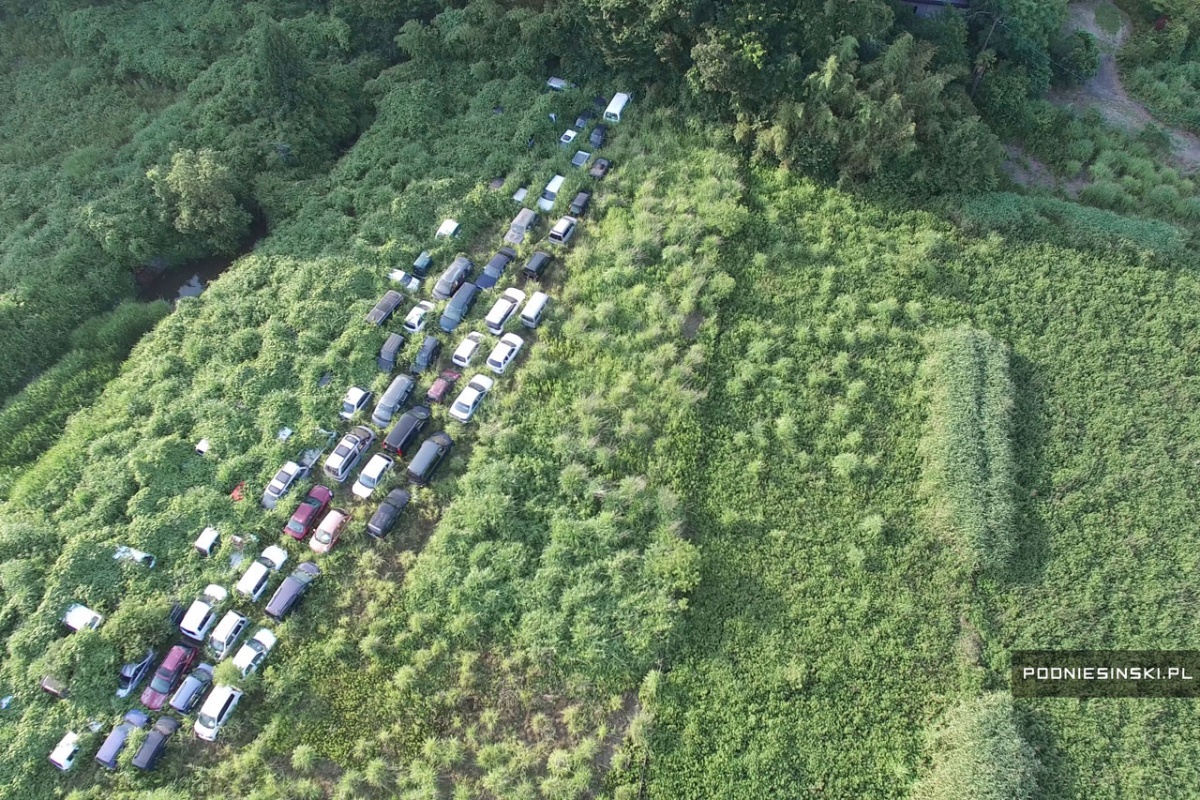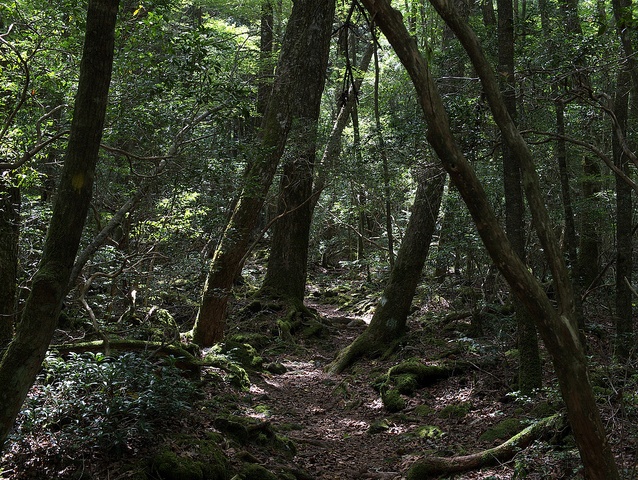The 11 Spookiest Spots in Japan
Whether they’re haunted, abandoned or just plain old creepy, these spots will definitely show you a chilly side of Japan you may never yet have known. Be forewarned: these get legitimately unnerving the further down you go.
By Diletta Fabiani11. Round Schoolhouse Ruins (Bibai City, Hokkaido)
These school ruins in Hokkaido are already creepy without adding anything at all. But to spice things up a bit, let’s mention the legend that whoever enters disappears or comes back insane. Actually, as the video below and several others show, people do come back alive, but the place is still quite a creepy spot. Round buildings of this kind were popular in Japan in the '60s. Not much is known about the school per se, except that it’s impossible to reach it by car and you have to walk in from the road; the area belongs to a former coal mine town northeast of Sapporo and it’s famous for supposedly being haunted.
10. Nakagusuku Kogen Hotel (Kitanakagusuku, Okinawa)
If the name Okinawa only evokes sunny beaches in your mind, think again. The island is famous for a series of allegedly haunted spots (and some would list the entire island as one big one), but even if you don’t believe in ghosts, the Nakagusuku Kogen Hotel’s pictures will still send chills down your spine.
It was supposed to be a luxury hotel in a beautiful location, perfect to lure in tourists for the 1975 Okinawa Ocean Exposition. However, a series of misfortunes halted the construction right in that year; in the official version, the building company went bankrupt, and part of the land was declared a protected historical landmark. In the unofficial version, monks believed the construction would anger local spirits, many workers agreed with them and boycotted the construction, and the owner spent a night on the property to prove the superstitions wrong but was committed to a mental asylum and then disappeared. Regardless of what version you want to believe, the Nakagusuku Kogen Hotel still stands today as a decaying memorial to the old days of the economic boom.
9. The Temple of Lies (Daigo-machi, Ibaraki Prefecture)
Hidden in the mountains of Ibaraki, Honkakuji Temple is literally filled to the ceiling with abandoned spirit tablets, or ihai. Spirit tablets are very important in Buddhist funerals: they're used in the ceremony, and additional rites are performed upon them to honor the departed soul, which is believed to reside inside. In 2002, a fraudulent religious cult was shut down when it was discovered they were selling tablets to relatives of the recently deceased with the promise that a Buddhist monk would perform daily auspicious rites on them. Yet all while the tablets were just stuffed inside Honkakuji and forgotten. The cult is gone, but left behind is a temple not only filled with the mementos of long-lost souls. While Honkakuji is its real name, most people know the place by the nickname, “The Temple of Lies.”
8. Chinoike Jigoku Hot Spring (Beppu City, Oita Prefecture)
Ever dreamed of bathing in blood—maybe like Hungarian Countess Elizabeth Báthory, who supposedly used this method to keep her youth?
Chinoike Jigoku hot spring is located in Beppu City, Oita Prefecture, on the northeastern corner of the island of Kyushu. Beppu is generally famous as a hot spring resort, but Chinoike Jigoku is a place you’d probably prefer to look at rather than bathe in—unless you have a strong desire to reenact a scene from Indiana Jones and the Temple of Doom.
While there's a whole series of eight jigoku ("hell") hot springs in Beppu, this one particularly deserves the title, thanks to the color and temperature of its water: red due to iron oxides, and going on an average of 78°C (around 169°F). Chinoike even means "pool of blood." Legend tells that this spring was used to torture and kill prisoners, boiling them alive. While it's hard to confirm whether or not this is true, you still might want to avoid dipping in. That said, shops in the vicinity do sell creams and other beauty products made with the "mud from hell." So maybe Báthory knew something after all?
7. Hashima Island (Nagasaki Prefecture)
Hashima (also known as Gunkajima, literally “Battleship Island”) is a tiny island around 15 kilometers (9 miles) off the shores of Nagasaki in the south of Japan. At its peak, the island was home to more than 5,000 residents, mostly working in the undersea coal mines. But the mine ran out of coal and was closed in 1974; all inhabitants departed soon after, leaving the island as a giant, untouched historical ruin.
Around the year 2000, Hashima started drawing attention for its historical value, and tourist access was allowed again in 2009. It was also declared a UNESCO World Heritage site in 2015, though not without debate, as it was also used as a labor camp for prisoners during World War II. The island undoubtedly possesses a certain beauty to it, but it’s also a quite eerie place given its post-apocalyptic atmosphere.
If you want to explore it online, you can do so here. You can also catch it filling in as Raoul Silva's cyberterrorist lair in the James Bond film Skyfall, or catch a tour in the video below.
6. Nakagin Capsule Tower (Shinbashi, Tokyo)
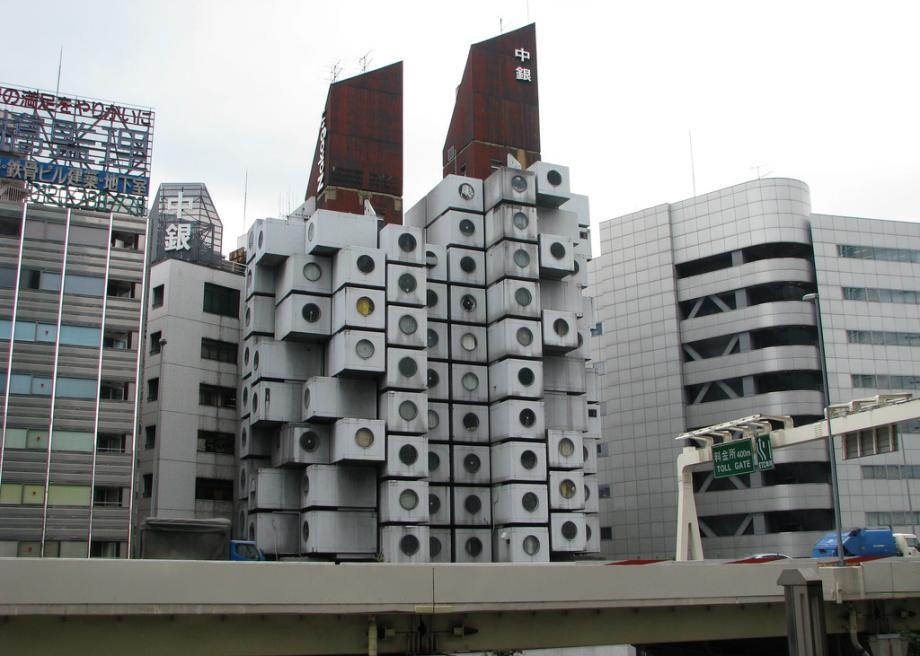
http://www.slate.com/blogs/atlas_obscura/2013/12/02/nakagin_capsule_tower_in_tokyo_is_a_claustrophobe_s_nightmare.html
You might have spotted this curious landmark walking around Shinbashi in Tokyo. The Nakagin Capsule Tower was designed by architect Kisho Kurokawa and completed in 1972, and it’s a rare example of an architectural movement called “Japanese Metabolism.” Its main concept was that cities and structures could keep growing and transforming in response to the environment, like living organisms do. In the Nakagin Tower, each of the 144 capsules was built off-site and attached to one of its two concrete towers. The capsules were fully equipped with furniture and appliances, and each one could be removed without affecting the others.
Nowadays, while some people still live or work in some of the capsules (or even rent them out on AirBnB), many are left to rust and rot, abandoned. The building is not passing the test of time very well, with exploding and leaking water pipes, the presence of dangerous asbestos, and debris falling on the street. The future of the building is also uncertain, with talks of both demolition in the works. The tower now stands in the heart of Tokyo, half living and half dead, a testimony to long-forgotten architectural ideas and dreams.
5. Nagoro Village (Tokushima Prefecture)
In Japan and all over the world, young people leave their tiny villages for bigger cities, looking for better life and employment opportunities, leaving less and less—and older and older—people behind. But what happens if someone decides to replace those who have gone … with dolls?
In 2002, Ayano Tsukimi came back to the waning village of Nagoro in Tokushima Prefecture on the island of Shikoku. Since then, she has constructed more than 350 dolls to repopulate the village—which has had the interesting side effect of bringing quite a lot of tourists to Nagoro. The dolls are scattered all around town, busy in daily, menial activities like going to school, fishing, tending gardens or waiting for the bus, many of them designed after the actual features of former living residents of the town.
4. Sengakuji Temple (Shinagawa, Tokyo)
On the outside, this is just a tiny temple in the busy neighborhood of Shinagawa at the southwestern edge of central Tokyo. However, the place is quite famous as the grave of the 47 ronin, the heroes of a well-known Japanese historical episode known as the Ako Vendetta or the Genroku Ako Incident, when 47 ronin (leaderless samurai) went on a bloody mission to avenge their feudal lord, who had been forced to commit seppuku (ritual suicide) after assaulting a court official. After killing the official and bringing his head back to the temple to place it on the tomb of their master, the remaining ronin were condemned to commit suicide, and complied.
If the story alone doesn’t impress you, you can go to Sengakuji and step into it yourself. Along with the tombs of the ronin, you can also see the stone upon which their lord committed suicide, and also the well in which the ronin washed their enemy’s severed head.
3. Nara Dreamland Amusement Park (Nara)
If there's anything that screams “spooky,” it's abandoned amusement parks. It’s no coincidence that they’re often the settings for horror movies, with their once-dreamy atmospheres transformed into nightmares.
Inspired by Disneyland in California, Nara Dreamland was built in 1961 just north of downtown Nara. It included your typical amusement park attractions, such as wooden and steel roller-coasters, a carousel and a monorail. However, the park was closed in 2006 due to a lack of visitors—quite probably exacerbated by the presence of a real Disneyland in Japan. Once the park lights were turned off for the last time, the facility was abandoned to its fate. Without clear demolition plans for the future, Nara Dreamland has become a paradise for haikyoists (urban explorers with a penchant for abandoned places), and the location for your perfect nightmares.
2. Fukushima Exclusion Zone (Fukushima Prefecture)
Everybody knows what happened in eastern Fukushima after the Great East Japan Earthquake of March 11, 2011. The ensuing accident at the Fukushima Daiichi nuclear power plant created a 20-kilometer (12.4-mile) exclusion zone around the plant, and people never came back.
When polish photographer Arkadiusz Podniesinski was granted access to the exclusion zone in 2015, he found scenery that would fit into any end-of-the-world movie you've ever watched. Cars swallowed by the vegetation, perfectly set dining tables, schools and houses abandoned in a rush, supermarkets full of cowebs: the Fukushima exclusion zone has become the perfect example of what the world would look like at the end of humanity.
1. Aokigahara Forest (Yamanashi Prefecture)
Our top position could only belong to this place. Located at the base of Mount Fuji in Yamanashi Prerfecture, Aokigahara Forest (also known as the "Sea of Trees," or jukai) has become infamous worldwide as a favorite spot for suicides, with as many as 108 recorded in the forest in 2004.
Aokigahara supposedly got its fame from the 1960 novel Kuroi Jukai by Seicho Matsumoto, in which a young, distressed lover commits suicide in the forest. However, others claim the dense forest has always been a popular spot for suicide and ubasute (the alleged custom of abandoning infirm or elderly relatives in the forest to die), and that it has long been considered haunted by angry, restless spirits. It's not uncommon to find memorials, prayers placards and even curse dolls resting among the trees.


